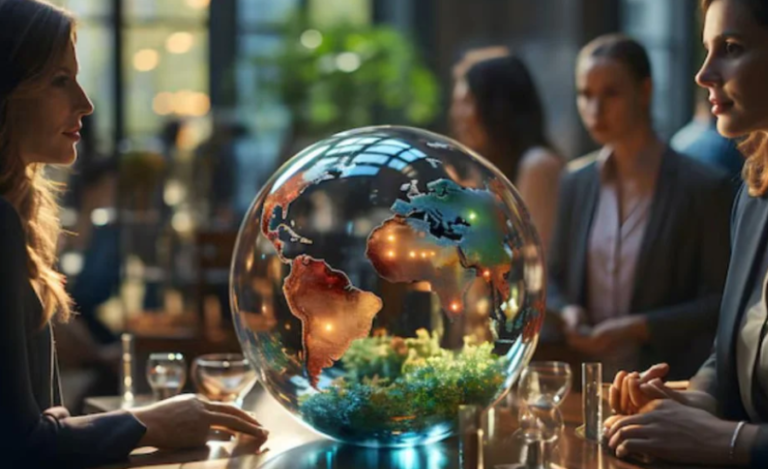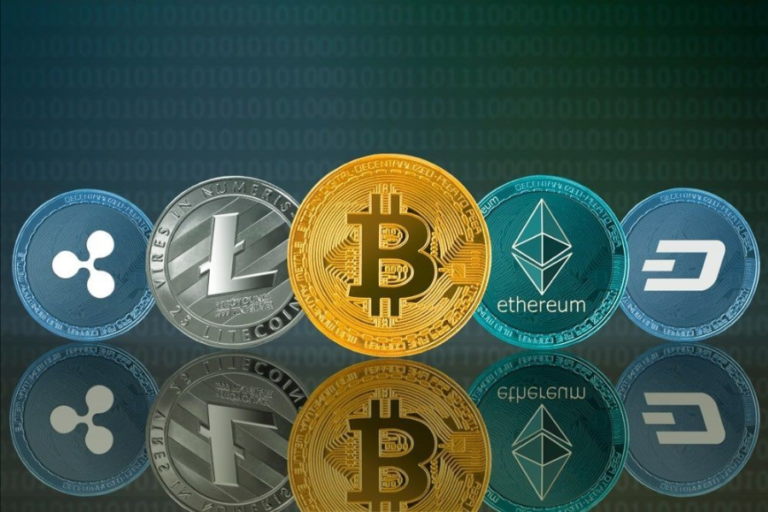Facing the Risks of 2021: What You Need to Know
The world has always been full of risks, but 2021 brought new challenges that left a lasting impression. From economic instability and climate change to cyberattacks and geopolitical tensions, this was a year that truly tested global resilience. It’s no surprise that many people are eager to learn about these risks, not just to understand them but to better navigate the turbulent waters ahead. In this article, we’ll take a closer look at the top global risks of 2021, why they matter, and what steps you can take to protect yourself.
But before we dive into the details, remember: the goal here isn’t to create fear, but to foster preparedness. Whether you’re concerned about financial security, natural disasters, or online threats, being aware of the risks can empower you to make informed decisions and safeguard your future.
The 2021 Global Risk Landscape
1. Economic Instability: A Shaky Foundation
The COVID-19 pandemic cast a long shadow over global economies in 2021. The year saw ongoing disruptions that left markets struggling to regain balance. From rising inflation to widespread supply chain issues, it became clear that the road to recovery was fraught with obstacles.
- Inflation: Prices rose dramatically in many sectors, from everyday items like groceries to housing and fuel. This affected the cost of living for many families worldwide.
- Supply Chain Disruptions: Shipping delays, port backlogs, and manufacturing slowdowns created a ripple effect across global markets. Consumers faced shortages, and businesses found it hard to maintain inventories.
- Unemployment: While some industries began to recover from pandemic-driven downturns, others, especially service sectors, continued to suffer. Job insecurity was a reality for many workers, further exacerbating economic instability.
Economic uncertainty impacts us all, regardless of industry or occupation. Inflation erodes purchasing power, while supply chain disruptions can lead to product shortages or delays. Understanding how these economic risks play out on a global scale is critical for planning your financial future.
For a more in-depth look at these risks, visit finanzasdomesticas.com.
2. Climate Change: A Growing Threat
2021 was another alarming year for climate change. As the planet continued to warm, its consequences were felt across the globe. From devastating wildfires to unprecedented flooding, extreme weather events became more frequent and severe, making it impossible to ignore the environmental crisis.
- Increased Natural Disasters: Regions worldwide saw a rise in extreme weather events, including hurricanes, heatwaves, and floods. These disasters destroyed homes, claimed lives, and put immense strain on emergency services.
- Environmental Degradation: Deforestation, rising sea levels, and habitat loss are just a few examples of how human activity is impacting the environment. The damage threatens ecosystems and the communities that depend on them.
- Health Impacts: The effects of climate change on health were also evident. Poor air quality due to wildfires and industrial pollution, combined with extreme heat, contributed to respiratory and cardiovascular problems, particularly for vulnerable populations.
The environmental challenges we faced in 2021 served as a stark reminder that climate change is not a future problem; it’s happening now. For more on the environmental risks of 2021, check out finanzasdomesticas.com.
3. Cybersecurity Threats: The New Age of Crime
The digital world has become an integral part of our lives, but with that comes increased vulnerability to cyberattacks. In 2021, cybercriminals ramped up their efforts, capitalizing on the shift to remote work and online interactions. Cybersecurity risks were a major concern for individuals, businesses, and governments alike.
- Ransomware Attacks: Cybercriminals use ransomware to lock users out of their systems or data until a ransom is paid. These attacks affected organizations across industries, from healthcare to infrastructure.
- Phishing Scams: Phishing schemes, where attackers trick individuals into revealing sensitive information like passwords or credit card numbers, increased during the pandemic. These scams often disguised themselves as legitimate emails or websites.
- Data Breaches: High-profile data breaches exposed the personal information of millions, creating widespread anxiety over identity theft and privacy violations.
The digital landscape has become a breeding ground for cybercrime, but the good news is that there are steps you can take to protect yourself. Using strong passwords, enabling two-factor authentication, and staying vigilant against phishing scams are some simple but effective measures.
4. Geopolitical Tensions: A Volatile World
In 2021, the geopolitical landscape was marked by heightened tensions and conflicts that had the potential to affect economies and political relations worldwide. Several flashpoints caught the world’s attention, raising concerns about global stability.
- U.S.-China Relations: The ongoing rivalry between these two superpowers, especially concerning trade, technology, and military influence, remained a central issue in 2021. Tariff wars and diplomatic disagreements fueled uncertainty in global markets.
- Russia-Ukraine Conflict: Russia’s military buildup along its border with Ukraine raised the specter of a potential armed conflict in Europe, stoking fears of war and impacting energy supplies in the region.
- Middle Eastern Instability: Tensions in the Middle East, particularly in Afghanistan and Iran, remained a significant global risk. The withdrawal of U.S. forces from Afghanistan and ongoing issues with Iran’s nuclear program further destabilized the region.
Keeping track of geopolitical developments is essential, as they have far-reaching effects on trade, energy markets, and even national security.
5. Social Inequality: The Silent Risk
While many of the risks in 2021 were overt and visible, social inequality often went unnoticed. Yet, it remains one of the most pressing challenges of our time. The pandemic exposed and deepened existing inequalities, making it clear that this issue is far from solved.
- Healthcare Disparities: Access to healthcare became a major point of contention, as wealthier populations were more likely to receive vaccines and medical care, leaving lower-income communities vulnerable.
- Educational Gaps: With schools closed during the pandemic, students from poorer households, often without reliable internet or devices, struggled to keep up with online learning.
- Job Insecurity: Marginalized groups were disproportionately affected by job losses and economic hardship during the pandemic. Women, minorities, and low-wage workers faced the brunt of these challenges.
Addressing inequality is vital for creating a fairer, more resilient society. Efforts to close the wealth gap and ensure equal access to healthcare, education, and job opportunities are crucial for future stability.
What Can We Do About These Risks?
While these global risks may seem overwhelming, there are actionable steps you can take to protect yourself and your loved ones. Here are a few strategies to consider:
- Stay Informed: Knowledge is power. Keeping yourself updated on global risks is essential. Follow reputable news sources and stay in the loop with current events to make better decisions.
- Prepare Financially: Economic instability can catch anyone off guard. Build an emergency fund, diversify your investments, and avoid taking on unnecessary debt.
- Be Environmentally Conscious: Each of us can take steps to reduce our carbon footprint, whether it’s by conserving energy, cutting down on waste, or supporting sustainable practices.
- Secure Your Online Presence: Cybersecurity should be a priority in the digital age. Use strong, unique passwords, enable two-factor authentication, and be cautious about sharing personal information online.
Conclusion
2021 was a year filled with complex global risks that affected everyone in some way. From economic challenges to environmental crises and cybersecurity threats, the hurdles we faced were significant but not insurmountable. By staying informed, preparing for the unexpected, and taking proactive steps, you can navigate these risks and build a more secure future. For further insights and tips, visit finanzasdomesticas.com.
Facts:
- Economic Instability: The COVID-19 pandemic significantly disrupted global economies in 2021. Inflation surged, supply chains faced major delays, and unemployment remained high in some sectors, particularly in services.
- Climate Change: 2021 saw an increase in extreme weather events like wildfires, floods, and hurricanes. Climate change also exacerbated environmental degradation, with deforestation, rising sea levels, and health impacts such as respiratory issues from poor air quality.
- Cybersecurity Threats: Cyberattacks like ransomware, phishing, and data breaches increased due to the shift towards remote work and online transactions. Key sectors like healthcare and critical infrastructure were especially vulnerable.
- Geopolitical Tensions: The year was marked by rising tensions between major powers, including U.S.-China trade disputes, the Russia-Ukraine conflict, and instability in the Middle East, particularly in Afghanistan and Iran.
- Social Inequality: The pandemic exposed and worsened existing social inequalities. Access to healthcare, education, and job security disproportionately affected marginalized communities, deepening the wealth and opportunity gap.
Summary:
In 2021, the world faced unprecedented risks that affected economies, the environment, and digital security. Economic instability continued due to pandemic aftershocks, with inflation, supply chain disruptions, and unemployment troubling both families and businesses. Climate change led to devastating natural disasters and environmental degradation. Meanwhile, the rise of cyberattacks highlighted vulnerabilities in the growing digital landscape. Geopolitical tensions, especially between the U.S., China, Russia, and Ukraine, added to global instability. Additionally, the pandemic worsened social inequalities, highlighting disparities in healthcare, education, and employment opportunities. Understanding these risks allows individuals and organizations to prepare for the future and take proactive measures.
FAQs:
- What were the biggest global risks in 2021?
The top risks were economic instability, climate change, cybersecurity threats, geopolitical tensions, and social inequality. - How did the pandemic contribute to global risks?
The pandemic intensified economic challenges like inflation and unemployment, worsened social inequality, and led to more cybersecurity vulnerabilities due to increased reliance on online platforms. - Why was climate change such a significant risk in 2021?
Climate change caused frequent and severe natural disasters, contributed to environmental degradation, and had adverse effects on public health, making it one of the most urgent risks. - How can I protect myself from cybersecurity threats?
Use strong passwords, enable two-factor authentication, update your software regularly, and be vigilant against phishing scams to reduce your risk of cyberattacks. - What can be done to reduce social inequality?
Efforts should focus on improving access to healthcare, education, and job opportunities, and implementing policies aimed at reducing the wealth gap.






